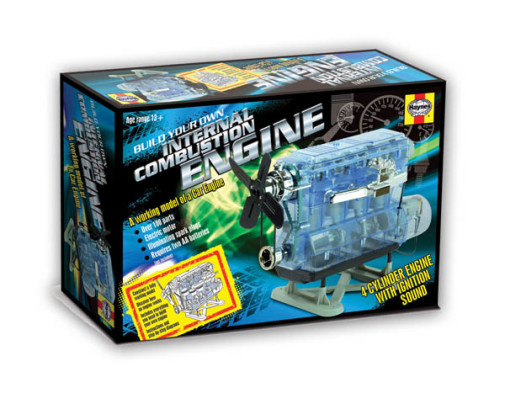We use cookies to make your experience better. To comply with the new e-Privacy directive, we need to ask for your consent to set the cookies. Learn more.
Build Your Own Haynes Internal Combustion Engine
This neat model kit features a working 4-stroke model car engine! The engine cover is transparent, so the user can see the moving parts at work once the model is completed. Book encourages the user to memorize the names of the parts and their functions before starting the building process. Although this could be a fun model project for a hobbyist of any age over 14, building this model engine is a great way to familiarize young car and engineer enthusiasts to the basics of engine building! The instruction manual illustrates clear step-by-step instructions, and even includes an educational section in the back of the book. The educational section includes information like the basic principles of a 4-stroke engine, how to keep a car engine healthy, basic engine terms, and more! The completed model not only runs for 45 seconds at a time, but also replicates the sound of a real engine when starting up. The parts of this model come pre-painted and are secured by burrs upon arrival. This kit includes all necessary hardware and tools to build the model; although, it is recommended that a small amount of vegetable oil be applied to the engine bearings to help them run smoother. Do not put real car oil in this model engine. The base also requires 2 AA batteries, not included. Completed model is approximately 7.5" tall and 8" long. ~ Brianna
Short of getting a motor out of an old car, finding a set of mechanics tools, and donating a few days of clothes to the grease monster, the Haynes engine kits are still the best way to get hands on experience with how an engine works. Having personally rebuilt several engines, I have to say that the accuracy and detail is astounding, giving the builder the opportunity to discover what all the moving parts do in an engine. These models bridge the gap between mechanics books that talk about race cars and engines and actually working on one yourself. You'll develop a deeper appreciation all of an engine's components that work together to produce rotating force.


Ordered for a class project for a middle school
My son loves to learn all about vehicles { Auto Up Keep Curriculum }. This is to encourage his learning, while having fun.
My great nephew recently wants to be a mechanic so I thought this would be perfect.
My son and I are studying Automotive